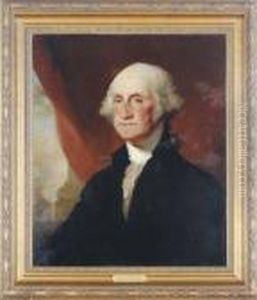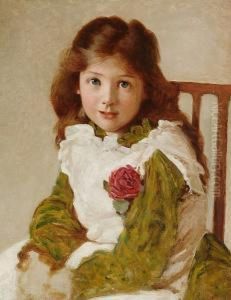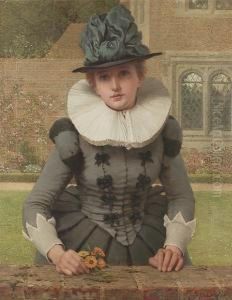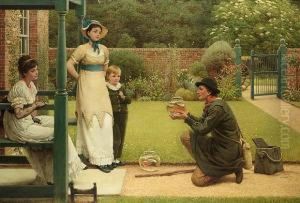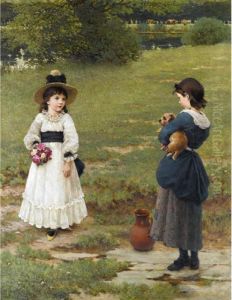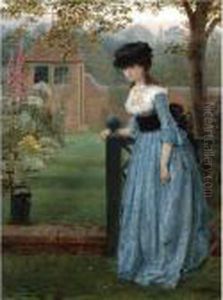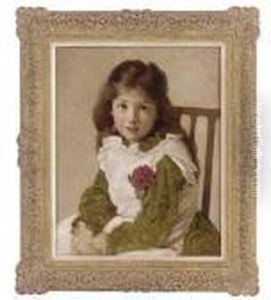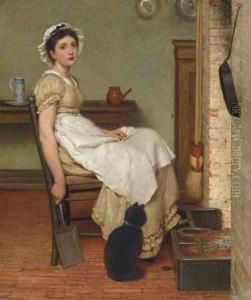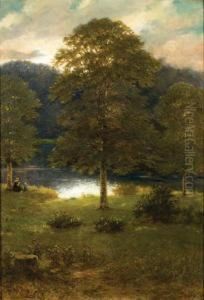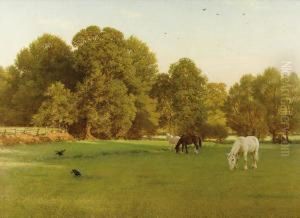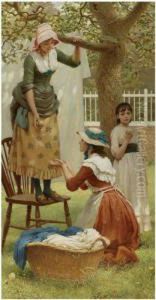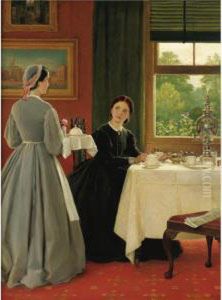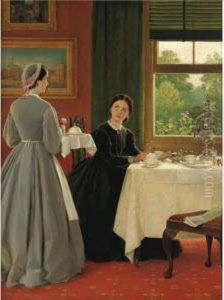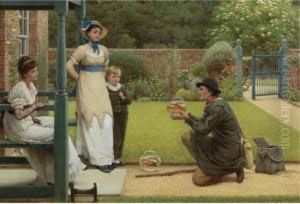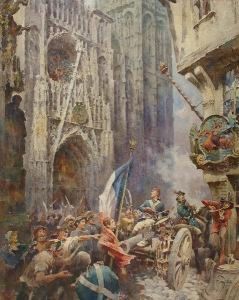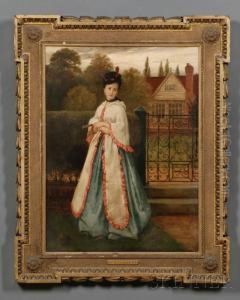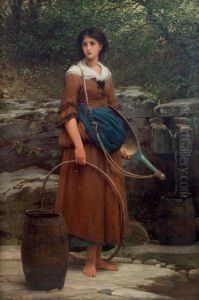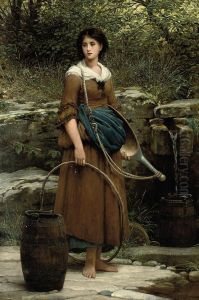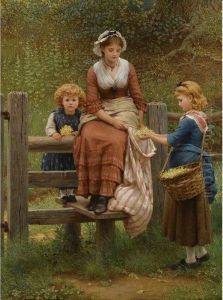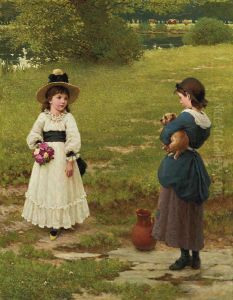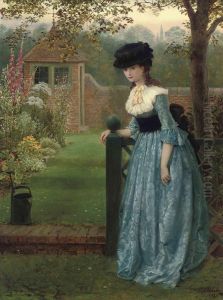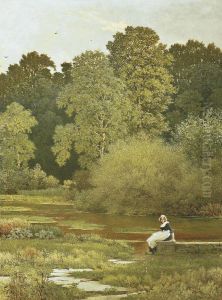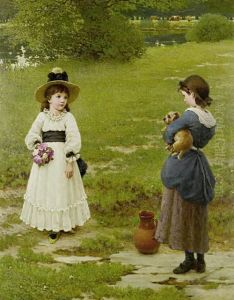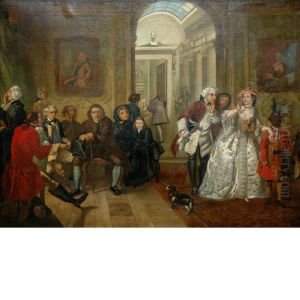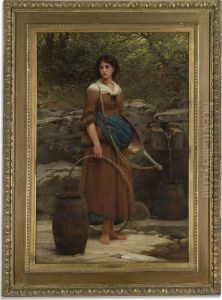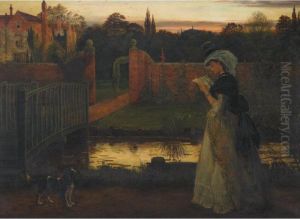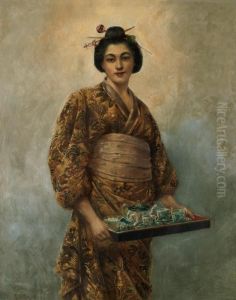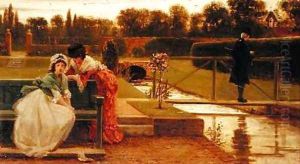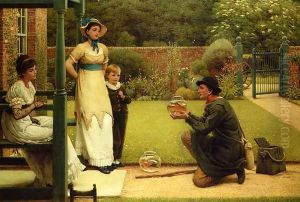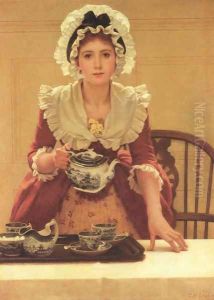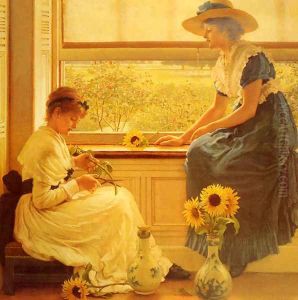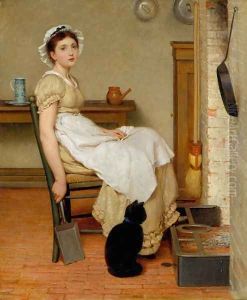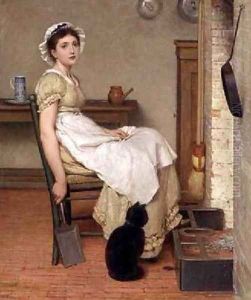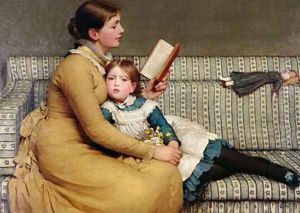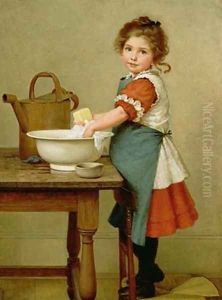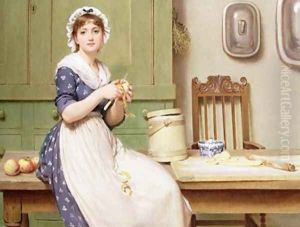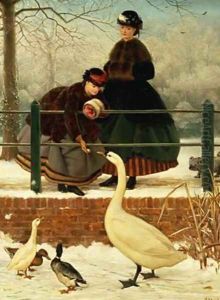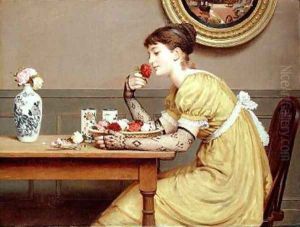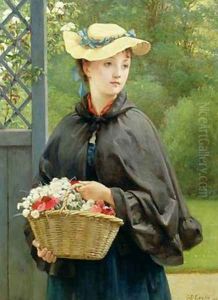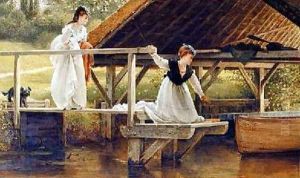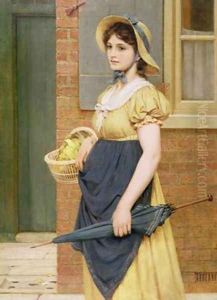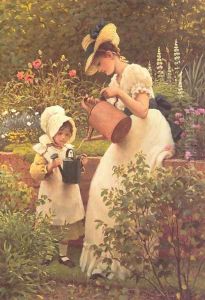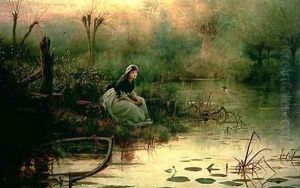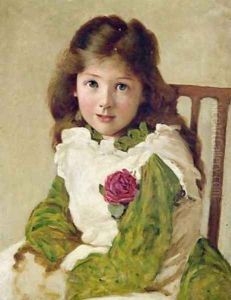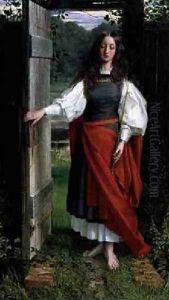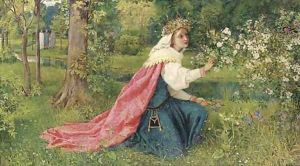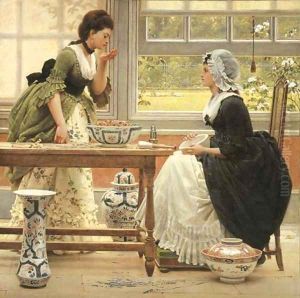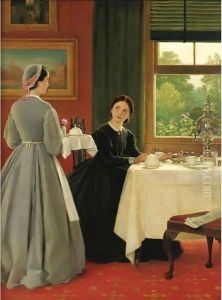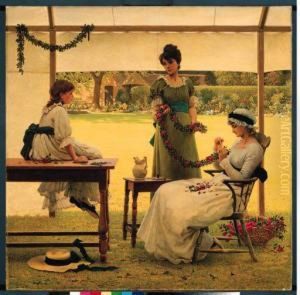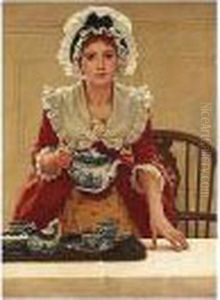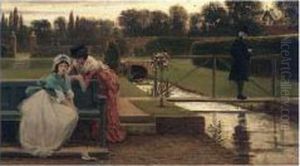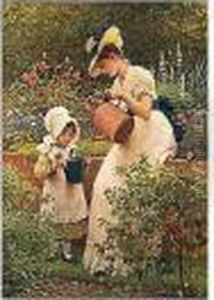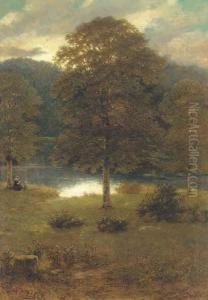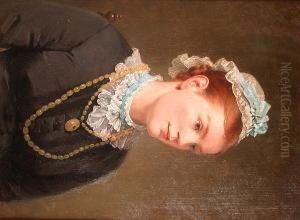George Dunlop, R.A., Leslie Paintings
George Dunlop Leslie was a notable English genre painter during the Victorian era. Born on July 2, 1835, in London, he was the son of the famous genre painter Charles Robert Leslie. Following in his father’s footsteps, George Leslie became adept at capturing the nuances of Victorian society through his artwork. He was educated at the prestigious schools of Leigh's and Cary's academies and later at the Royal Academy Schools.
George Leslie's paintings often depicted scenes of contemporary life, emphasizing the leisure activities of the middle and upper classes. His works are characterized by their narrative quality and often included a sense of humor or sentimentality. He was particularly skilled in portraying the interactions between individuals within domestic settings, and his attention to detail in terms of costumes and interiors was remarkable. Leslie's paintings were well-received by the public and critics alike, and he was a regular exhibitor at the Royal Academy from 1859 onwards.
In 1876, Leslie was elected an Associate of the Royal Academy (A.R.A.), and later, in 1885, he became a full Royal Academician (R.A.). Throughout his career, he also contributed to various art publications and wrote essays on art criticism. His book 'Our River', about the Thames near Wallingford, was illustrated by his own drawings and became quite popular.
George Dunlop Leslie was also a member of the St John's Wood Clique, a group of artists who lived in the St John's Wood area of London and were known for their social gatherings and shared interests in art. Leslie's social circle included many prominent figures of the time, and he was well-respected among his peers.
He continued to paint until his death on February 21, 1921. Leslie's legacy includes a rich collection of genre paintings that provide insight into the Victorian era and its social dynamics. His works are held in various collections, including the Tate Britain and other public galleries in the United Kingdom.
